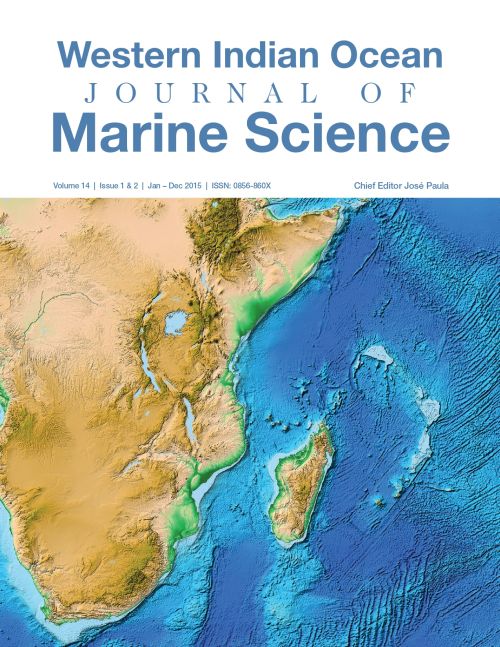Main Article Content
Mangrove transformation in the Incomati Estuary, Maputo Bay, Mozambique
Abstract
Peri-urban mangroves in Maputo Bay were studied to assess changes on forest area cover and the effect of cut pressure on the forest structure and condition, based on GIS techniques and measurement of forest trees’ structural parameters. The results show a 5% increase in forest area in 2003, with 64% of total forest being unhealthy mangrove. Deforestation took place at a mean rate of 17 ha/year. Avicennia marina dominated over other 5 species. Overall the forest was composed by small trees (mean height 2.6 m; mean DBH 7.45 cm), height and DBH varying significantly when comparing species and communities (p< 0.05 for both). When looking at forest condition, only semi-intact community conserved essentially the structural characteristics of a healthy forest. Selective tree cutting targeted most on A. marina and on trunks with diameter among 6-12 cm. The regeneration potential of the forest was of 181 ind/ha, new mangrove area having the highest density of juveniles (671 ind/ha). By identifying the most critical areas of the Incomati and describing its condition, this study raises the question of peri-urban mangroves poor condition, and highlights the need for further understanding of estuary regimes that may influence mangrove community changes other that deforestation.






